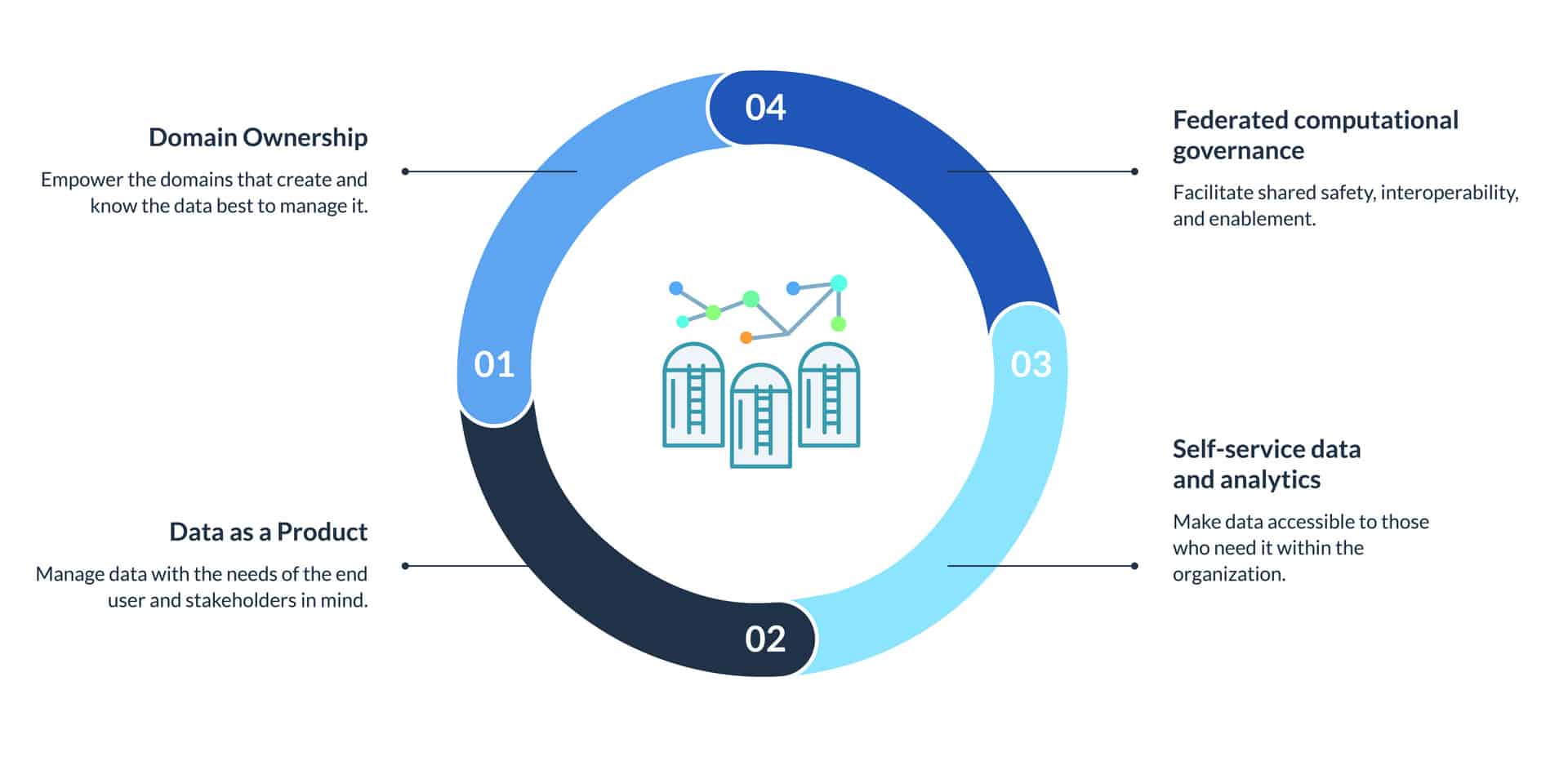







Mar 22, 2022

The rise of the data lake and cloud data warehouses have helped to address these issues, but technology alone cannot solve such a monumental challenge. A paradigm shift in how enterprise data is managed is the only way to move forward. And that paradigm shift is built on the back of a data mesh methodology.
Data mesh emerged in 2019 with the potential to revolutionize enterprise data management as we know it. Popularized by Thoughtworks’ Zhamak Dehghani, data mesh is a socio-technical approach that marries product thinking with a move towards domain-driven data management.
Data mesh is a new approach for organizations to collect, manage, and share data — a method of data management that empowers domain experts to own the data they create and make it available to consumers across business lines.

A data mesh approach to data governance is defined by four pillars:
Domain ownership - The first pillar, data ownership by domain, decentralizes data ownership and gives business domains (Sales, Marketing, Finance, etc.) ownership of the data they create. The benefit is that the domain’s familiarity with the data will provide deeper insight into where, why, and how it should be used.
Data as a product - The second, treating data as a product, makes data discoverable, understandable and usable in the same way you search for and purchase products using your favorite e-commerce platform. Data is considered a product by each domain that publishes it. This approach empowers domain owners to become wholly responsible and accountable for their data, including its quality, representation, and cohesiveness. Under this model, other domains or parts of the business become internal customers of your data.
Self-serve data infrastructure as a platform - Self-service data and analytics — the third pillar — makes data accessible to members of the organization who need it to make informed business decisions. It simplifies data discovery and enables data democratization, making it quick and easy for anyone to surface relevant insights.
Federated computational governance - The fourth pillar, federated computational governance, is the least understood. Simply put, it establishes governance policies for each decentralized domain, ensuring all domain owners operate within a consistent framework. These policies should be computable — in code — in order for data products to be easily consumed.
To date, much has been written about the philosophy behind the approach, but very little has been published in regard to establishing a framework or building a culture designed for governing the data mesh.
Read our white paper, "The Data Mesh Governance Framework You Can Implement Today.”

The rise of the data lake and cloud data warehouses have helped to address these issues, but technology alone cannot solve such a monumental challenge. A paradigm shift in how enterprise data is managed is the only way to move forward. And that paradigm shift is built on the back of a data mesh methodology.
Data mesh emerged in 2019 with the potential to revolutionize enterprise data management as we know it. Popularized by Thoughtworks’ Zhamak Dehghani, data mesh is a socio-technical approach that marries product thinking with a move towards domain-driven data management.
Data mesh is a new approach for organizations to collect, manage, and share data — a method of data management that empowers domain experts to own the data they create and make it available to consumers across business lines.

A data mesh approach to data governance is defined by four pillars:
Domain ownership - The first pillar, data ownership by domain, decentralizes data ownership and gives business domains (Sales, Marketing, Finance, etc.) ownership of the data they create. The benefit is that the domain’s familiarity with the data will provide deeper insight into where, why, and how it should be used.
Data as a product - The second, treating data as a product, makes data discoverable, understandable and usable in the same way you search for and purchase products using your favorite e-commerce platform. Data is considered a product by each domain that publishes it. This approach empowers domain owners to become wholly responsible and accountable for their data, including its quality, representation, and cohesiveness. Under this model, other domains or parts of the business become internal customers of your data.
Self-serve data infrastructure as a platform - Self-service data and analytics — the third pillar — makes data accessible to members of the organization who need it to make informed business decisions. It simplifies data discovery and enables data democratization, making it quick and easy for anyone to surface relevant insights.
Federated computational governance - The fourth pillar, federated computational governance, is the least understood. Simply put, it establishes governance policies for each decentralized domain, ensuring all domain owners operate within a consistent framework. These policies should be computable — in code — in order for data products to be easily consumed.
To date, much has been written about the philosophy behind the approach, but very little has been published in regard to establishing a framework or building a culture designed for governing the data mesh.
Read our white paper, "The Data Mesh Governance Framework You Can Implement Today.”